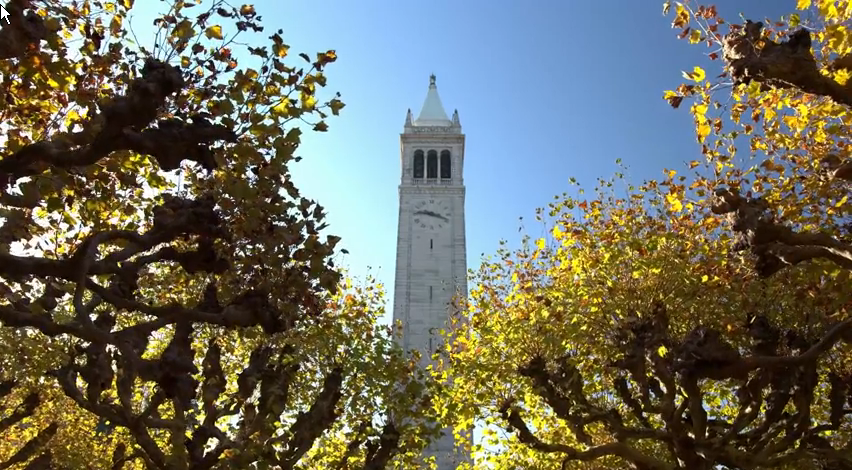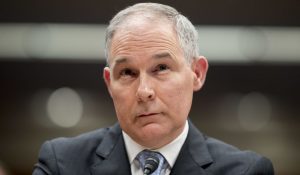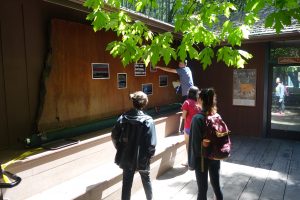By Canyon Perry
“Do you have a second to talk about climate change?” Go to any UC campus across California, and you’ll be stopped and asked to “join the fight to stop climate change” by student organizers for the California Public Interest Research Group. The students will ask you to sign a petition in support of Senate Bill 100, or SB 100, a bill that would require California to get 100 percent of its energy from renewable sources by 2045. Their passion and excitement is infectious, so you grab the board and happily sign, proud that you did your part to stop the use of fossil fuels. You begin to imagine a national movement toward renewable energy, all led by California’s progressive legislation. But as you leave the idealism of the college campus, you start to wonder how feasible 100 percent renewable energy by 2045 really is for California, let alone the nation. What would it actually look like? Would your electricity prices go up? Who would stand to gain, and who would be left behind? SB 100 is both politically and economically feasible, but its passage is contingent upon pragmatic policymaking. Only by balancing these students’ idealism against political realities can 100 percent renewable energy be achieved.
Introduced in January 2017, SB 100 quickly passed through the Senate with a25-13 margin: its eventual passage in the Assembly seemed nearly guaranteed.1 Climate change activists were proud and excited for California to be a global leader; if passed, California would be the largest economy in the world to commit to 100 percent renewable energy.2 The stage seemed set for California to lead the way toward a clean energy future, but the bill hit a roadblock in September 2017. Strong opposition from the state’s publicly owned utility companies and from organized labor forced legislators to table the bill in the State Assembly, where it remains at the time of writing.3 Union concerns of job security and utilities’ fears of rising prices were compounded by Governor Jerry Brown’s attempt to force a bill that would unify all the power grids of the western United States. In an effort to gain union support, Brown’s plan would require large utilities to buy extra solar and wind power over the next few years. However, this proposal generated backlash from utilities and ultimately was not enough to assuage union fears that a grid plan could lead to jobs being exported to neighboring states.4 Brown’s commitment to both bills may have undermined any support either would have received on its own; the plan for a unified western energy grid did not enjoy the same widespread approval as SB 100. Critics claim the bill could give too much power to Republican lawmakers and coal companies in Utah and Wyoming, effectively continuing California’s reliance on coal for energy, albeit through imports. Despite the potential benefits, the creation of a unified power grid is too politically risky to justify, especially if it jeopardizes SB 100.
In contrast, SB 100 enjoyed widespread popular support, with 76 percent of Californians surveyed supporting the bill.5 Its feasibility is not just limited to the political sphere; the economics of SB 100 are sound as well. Renewable energy development is relatively labor intensive compared to fossil fuel development, so it creates more jobs per dollar invested. And although the initial cost of developing renewable energy can be high, the energy is “free” once the facility is built. This translates to a standardization and long-term decrease of prices for consumers.6 SB 100’s potential benefits to California’s consumers and its popular support make it an economically and politically viable solution for our reliance on fossil fuels. While both economic and political feasibility are important, political realities must be the chief concern; change can only arise if the political climate allows for it. In this sense, SB100 is the best option for California to continue fighting climate change. If it can be untangled from Jerry Brown’s plan for a unified western energy grid, SB 100 will most likely be met with Assembly approval in 2018.
Although California’s attempts at going full clean energy are admirable and have the potential to motivate other states to follow,

- California Legislative Information. “SB-100 California Renewables Portfolio Standard Program: emissions of greenhouse gases.” California Legislative Information, 2017. https://leginfo.legislature.ca.gov/faces/billHistoryClient.xhtml?bill_id=201720180SB100
- Rainey, James. “California Lawmakers Fail to Approve 100 Percent Renewable Energy Goal.” NBC News, 16 Sept. 2017. https://www.nbcnews.com/science/environment/california-lawmakers-fail-approve-100-percent-renewable-energy-goal-n801991
- Roth, Sammy. “Landmark California bill for 100% clean energy unexpectedly put on hold until next year.” The Desert Sun, 16 Sept. 2017. https://www.desertsun.com/story/news/politics/2017/09/16/landmark-california-bill-100-clean-energy-unexpectedly-put-hold-until-next-year/670434001/
- Roth, Sammy. “Jerry Brown’s western grid plan is dead in Sacramento, at least for now.” The Desert Sun, 13 Sept. 2017. https://www.desertsun.com/story/tech/science/energy/2017/09/13/jerry-browns-western-grid-plan-dead-sacramento-least-now/662134001/
- California Democratic Caucus. “Californians Want a Clean Energy Future.” California State Senate, 2018. http://focus.senate.ca.gov/sb100
- Union of Concerned Scientists. “How Renewable Energy Standards Deliver Economic Benefits.” Citizens and Scientists for Environmental Solutions, May 2013. https://www.ucsusa.org/sites/default/files/legacy/assets/documents/clean_energy/Renewable-Electricity-Standards-Deliver-Economic-Benefits.pdf
- National Academy of Engineering and National Research Council. The Power of Renewables: Opportunities and Challenges for China and the United States. The National Academies Press, 2010. https://doi.org/10.17226/12987
- Union of Concerned Scientists.
- Ibid.
- National Renewable Energy Laboratory. “Renewable Electricity Futures Study.” U.S. Department of Energy, 2012. https://www.nrel.gov/analysis/re-futures.html









Be First to Comment